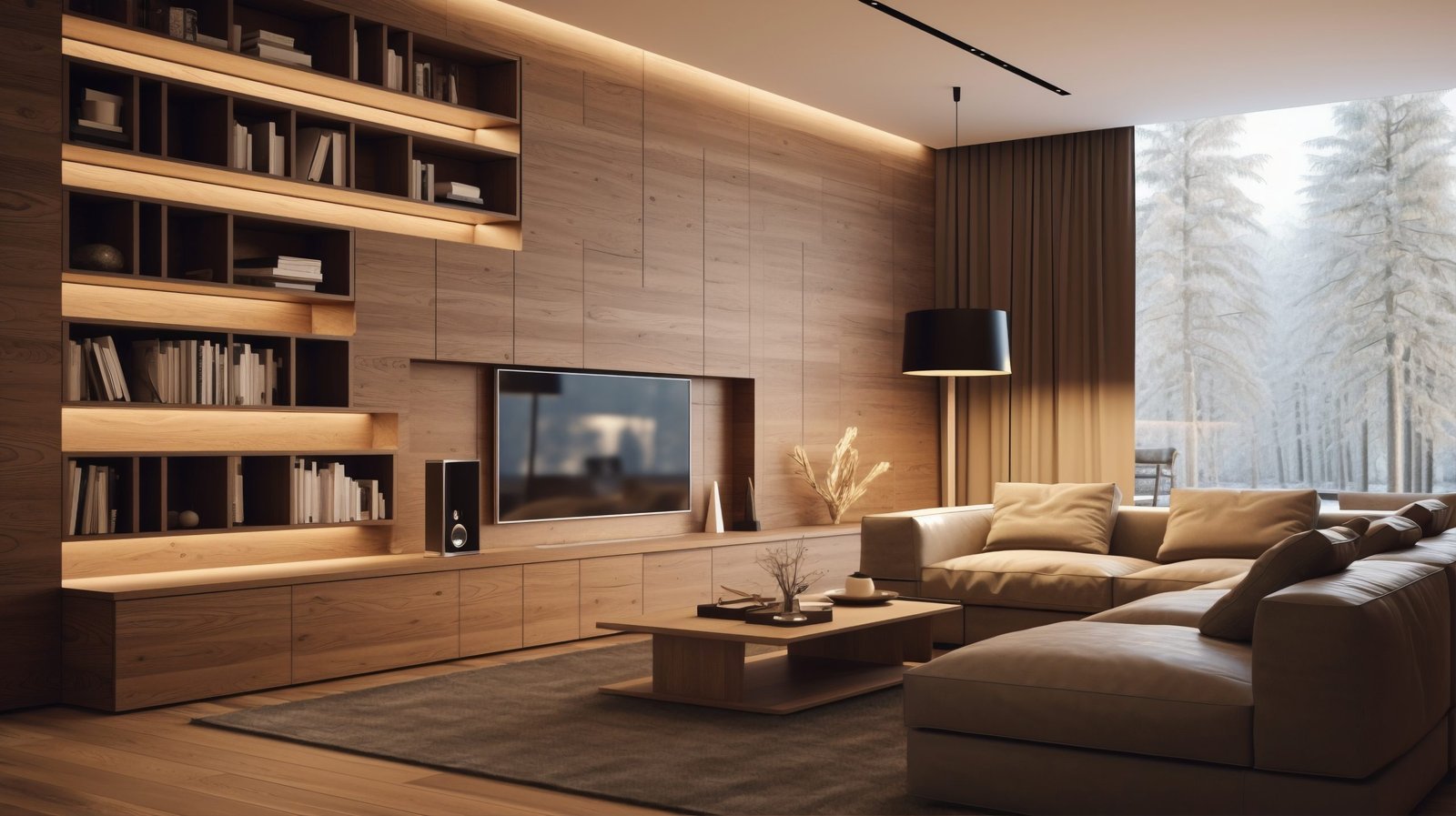Contemporary interior design solutions applied to home offices are aimed at designing the interior that will contribute to your productivity and, at the same time, preserve the aesthetic integrity of your house.
Such balance is especially significant in the luxury residential real estate in the city of Dubai, as people who want to purchase a house are highly demanding of high-class solutions that meet modern needs.
Key Components of Present-Day Office Design
The interest in home office interior design is focused now on the minimalistic style, minimalism, clarity of the lines, and functionality. The modern trend lays stress on freeing the spaces and making them more focused, and stimulating the mind with the help of features which minimise visuals.
The cornerstone of a successful contemporary workspace design is the knowledge of how the relationship between the various elements facilitates the formation of unified spaces. Color schemes usually have a neutral foundation of tones combined with smart emphasis using color that energizes and does not overpower.
Maximizing Strategic Planning of Space
Proper planning of space is at the heart of an effective design of a home office. The design principles of modern interior design focus on highlighting the need to develop separate areas of your office, even in case you have limited square footage to work with.
Differentiate between concentrated work zones, video calls, storage, and leisure in order to make use of every space and be the most effective mentally. Think of organizing furniture and equipment according to the natural ebb and flow of what you do daily.
Locate your major workstation where you can be illuminated naturally, and the glow in the computer monitors will not be prominent. Put clear ways through which one can move without interference to other work areas or cause eyesight confusion.
Lighting Solutions That Enhance Productivity
Proper lighting represents one of the most critical aspects of modern interior design for home offices. Layer different types of lighting to create environments that adapt to various work activities throughout the day.
Combine ambient lighting for general illumination, task lighting for focused work, and accent lighting to highlight design elements and create visual interest. Natural light should be your primary consideration when possible.
Position workstations near windows to benefit from daylight, but use adjustable window treatments to control brightness and prevent screen glare. Supplement natural light with LED fixtures that provide consistent, color-accurate illumination that reduces eye strain during extended work sessions.
Furniture Selection for Comfort and Style
Modern interior design emphasizes furniture that combines ergonomic functionality with aesthetic appeal. Invest in adjustable desks that accommodate both sitting and standing work positions, promoting better health and productivity throughout the day.
Storage solutions should integrate seamlessly into your design while providing adequate organization for different types of work materials. Consider these modern storage approaches:
- Built-in shelving systems that maximize vertical space while maintaining clean lines.
- Multi-functional furniture such as storage ottomans that serve as both seating and organization.
- Floating shelves that provide display space without overwhelming smaller rooms.
- Hidden storage compartments that keep everyday items accessible yet out of sight.
Color Psychology and Material Selection
The psychological impact of color choices significantly affects productivity and mood in home office environments. Modern interior design typically incorporates neutral base colors such as whites, grays, and beiges that create calming foundations for focused work.
Material selection should balance durability with aesthetic appeal. Hard surfaces like quartz countertops or laminate desk surfaces provide easy maintenance and professional appearance, while soft textures through rugs, curtains, or upholstered seating add warmth and acoustic comfort to prevent spaces from feeling sterile.
Creative Shelf LLC: Redefining Interior Design Excellence in Dubai
Since its inception in 2007, Creative Shelf LLC, co-founded by Mr. Huzefa Altaf, has been a cornerstone of Dubai’s interior design and fit-out industry. Renowned for crafting smart, functional, and visually stunning spaces, Creative Shelf delivers bespoke solutions for residential, commercial, retail, hospitality, exhibition, and industrial projects. Under Mr. Huzefa Altaf’s visionary leadership, the company—part of the Creative Group of Companies, including Creative Furniture and Creative Interior Company—leverages an in-house execution model to ensure seamless project delivery, from innovative design to precision fit-out.
With nearly two decades of expertise, Creative Shelf transforms spaces, focusing on sustainability, user-centric design, and measurable ROI through strategic brand integration. Their diverse portfolio, from luxurious villas to dynamic office spaces, showcases their mastery in blending aesthetics with functionality, earning them a reputation as a trusted authority in the UAE.
Creative Shelf’s thought leadership is evident in their blog, which offers expert insights on design trends and practical solutions, empowering clients and enthusiasts alike. Committed to excellence, innovation, and quality, Creative Shelf LLC continues to set the standard for interior design and fit-out services in Dubai, creating spaces that inspire and endure.

